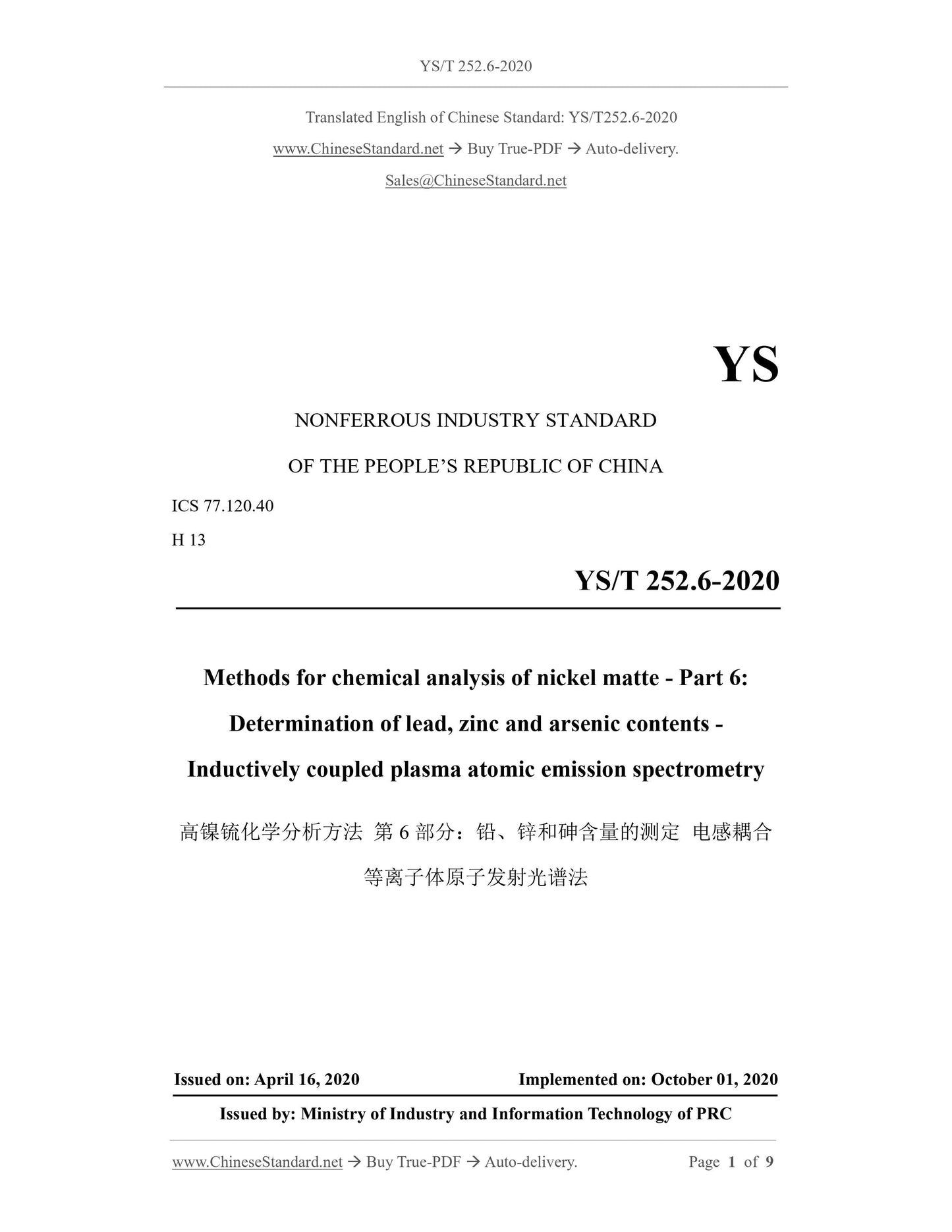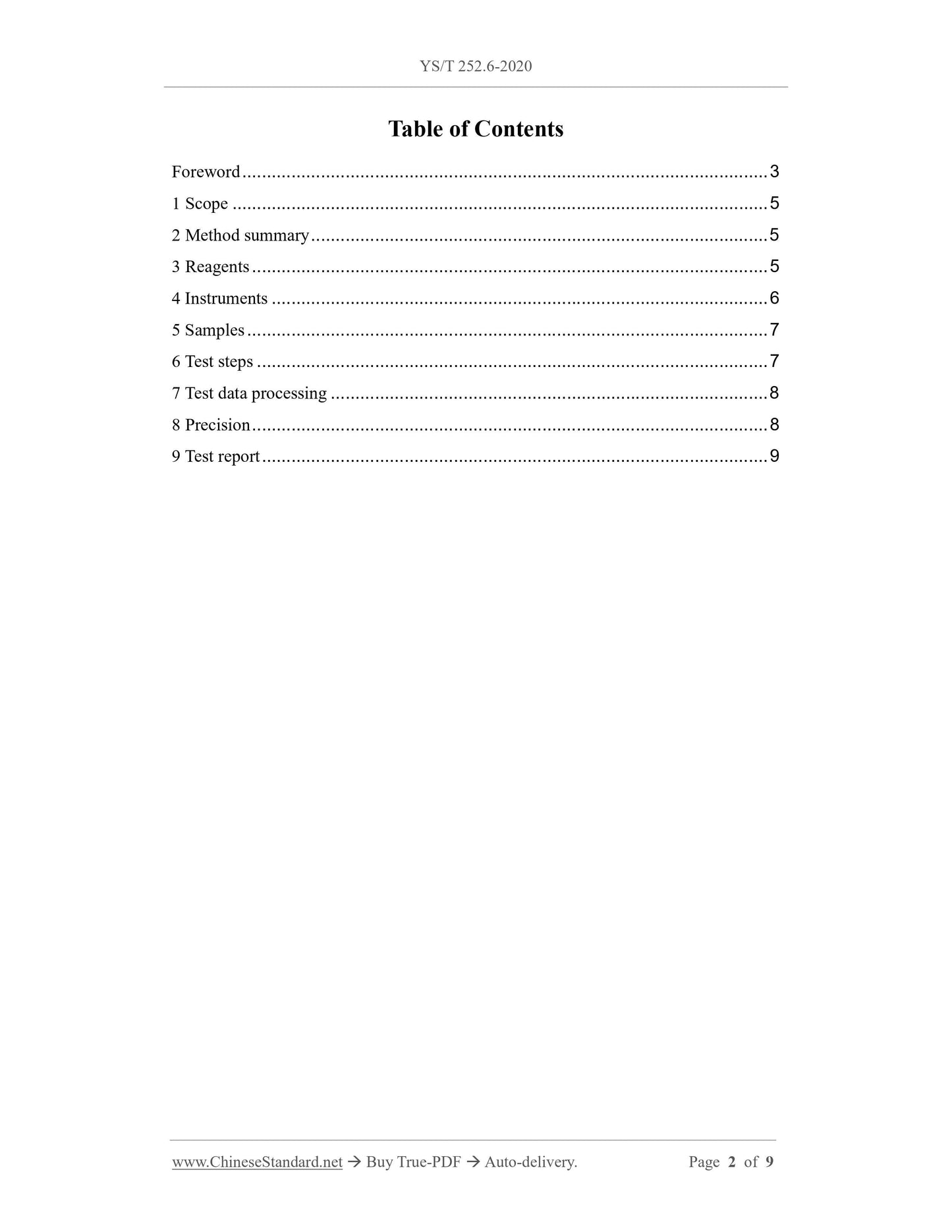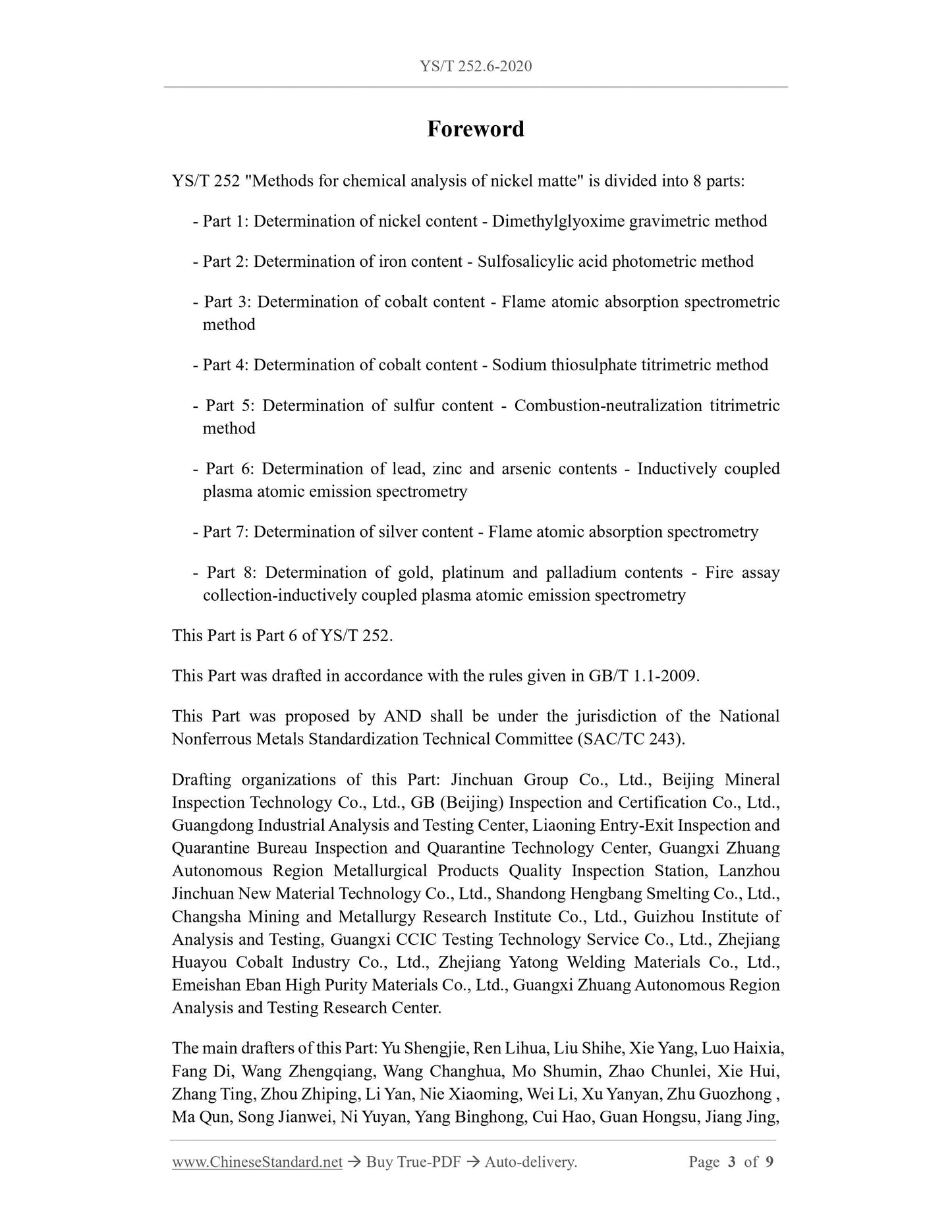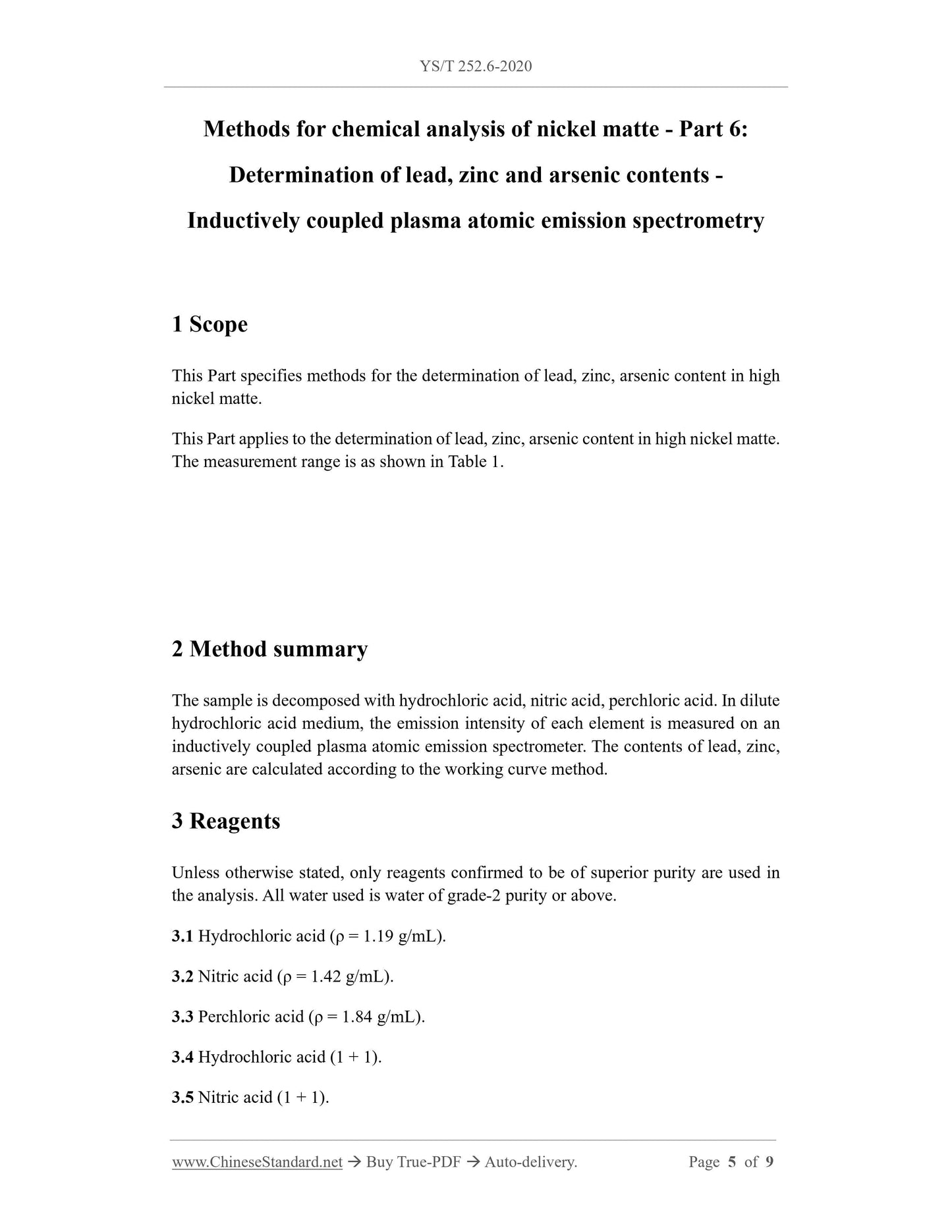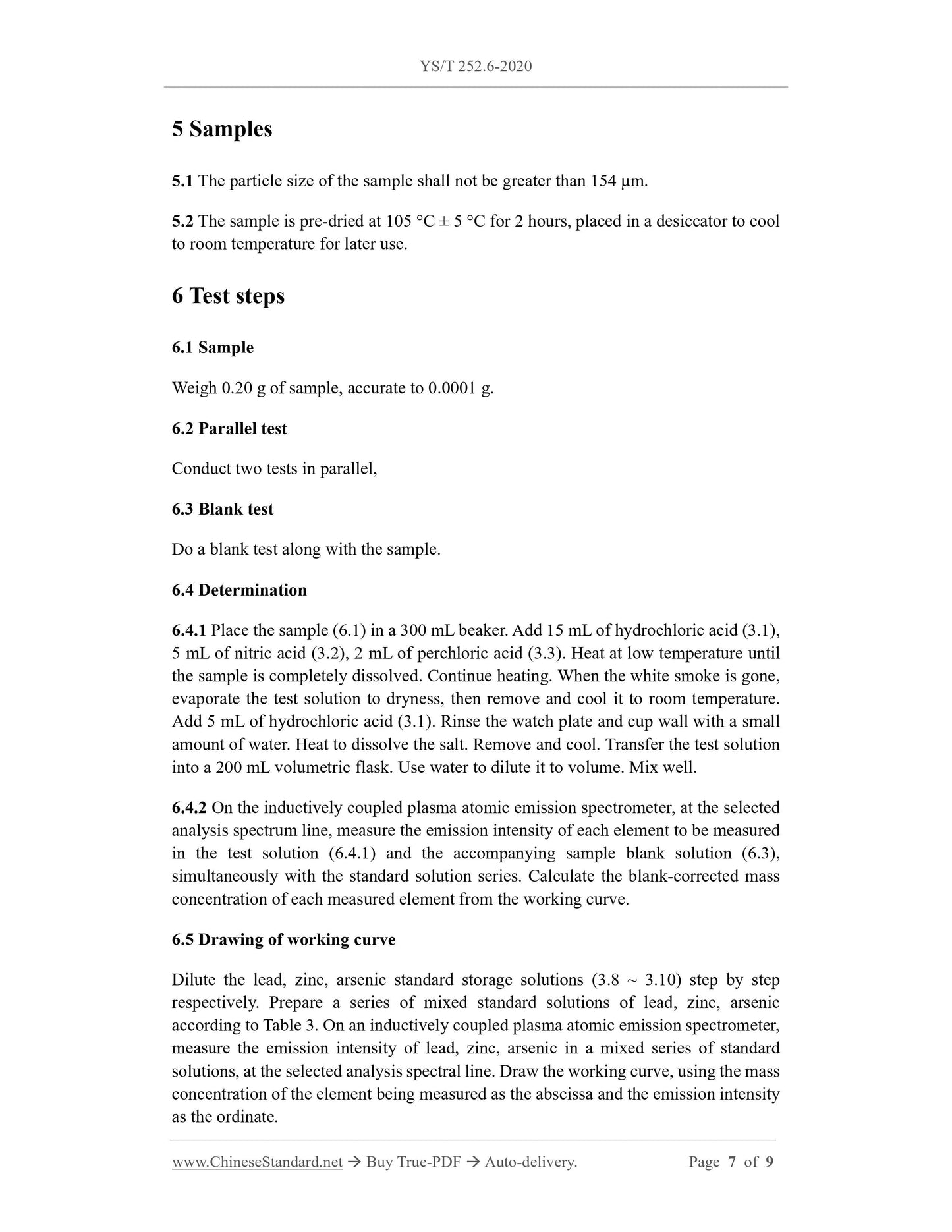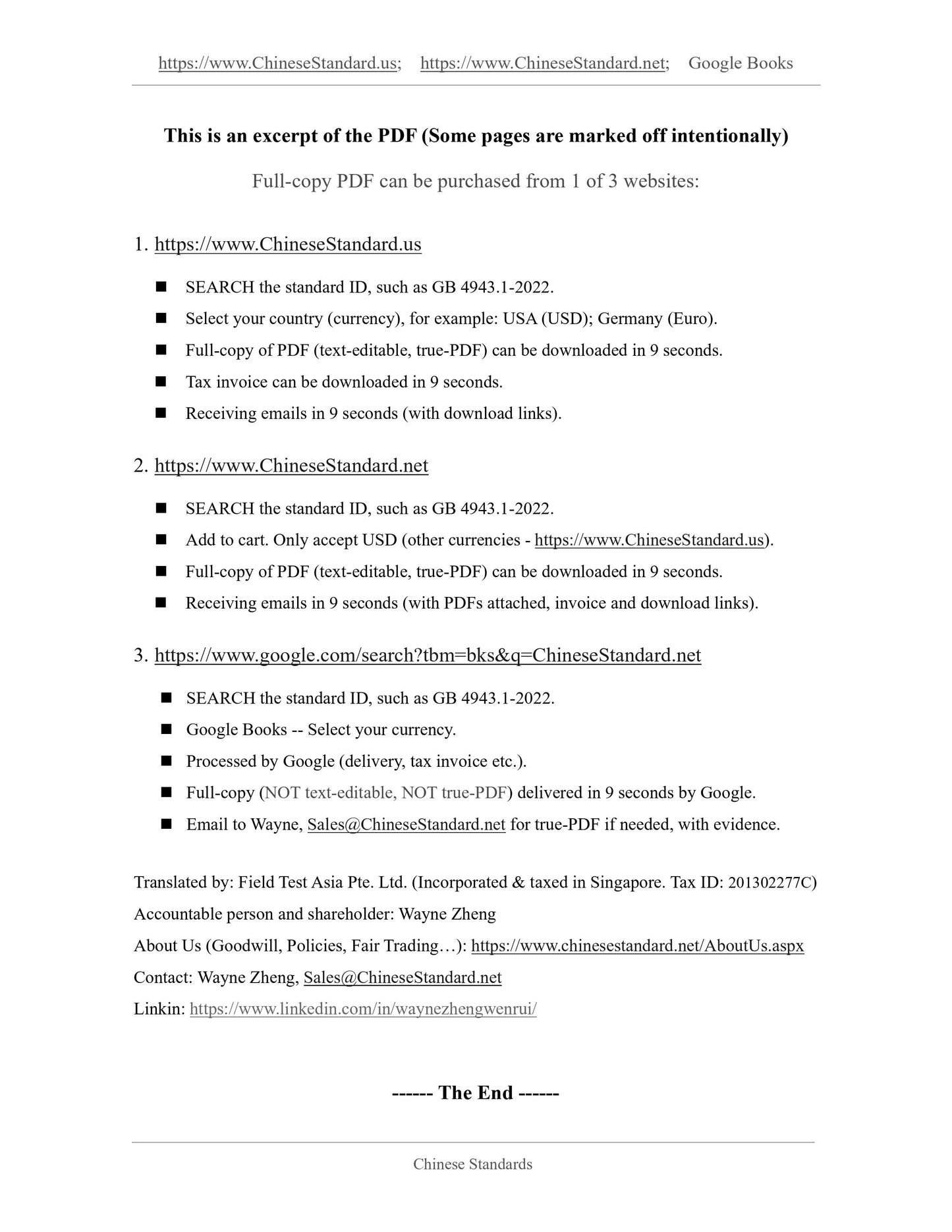1
/
of
6
www.ChineseStandard.us -- Field Test Asia Pte. Ltd.
YS/T 252.6-2020 English PDF (YS/T252.6-2020)
YS/T 252.6-2020 English PDF (YS/T252.6-2020)
Regular price
$125.00
Regular price
Sale price
$125.00
Unit price
/
per
Shipping calculated at checkout.
Couldn't load pickup availability
YS/T 252.6-2020: Methods for chemical analysis of nickel matte - Part 6: Determination of lead, zinc and arsenic contents - Inductively coupled plasma atomic emission spectrometry
Delivery: 9 seconds. Download (and Email) true-PDF + Invoice.Get Quotation: Click YS/T 252.6-2020 (Self-service in 1-minute)
Newer / historical versions: YS/T 252.6-2020
Preview True-PDF
Scope
This Part specifies methods for the determination of lead, zinc, arsenic content in highnickel matte.
This Part applies to the determination of lead, zinc, arsenic content in high nickel matte.
The measurement range is as shown in Table 1.
Basic Data
| Standard ID | YS/T 252.6-2020 (YS/T252.6-2020) |
| Description (Translated English) | Methods for chemical analysis of nickel matte - Part 6: Determination of lead, zinc and arsenic contents - Inductively coupled plasma atomic emission spectrometry |
| Sector / Industry | Nonferrous Metallurgy Industry Standard (Recommended) |
| Classification of Chinese Standard | H13 |
| Classification of International Standard | 77.120.40 |
| Word Count Estimation | 7,713 |
| Date of Issue | 2020 |
| Date of Implementation | 2020-10-01 |
| Issuing agency(ies) | Ministry of Industry and Information Technology |
| Summary | This standard specifies the method for the determination of lead, zinc and arsenic content in high nickel matte. This standard applies to the determination of lead, zinc and arsenic content in high nickel matte. |
Share
